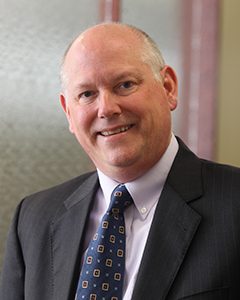Keep It Simple!

A blog by Rich Rausser, CPC, QPA, QKA, Senior Vice President, Pentegra Retirement Services – November 24, 2015
A July 2015 column in The New York Times titled “Why Investing Is So Complicated, and How to Make It Simpler” caught my eye. In the article, the author discusses investing for retirement and highlights some of the challenges that long-term investors often face:
“What distinguishes the market for investments is our inability to judge whether we have chosen well. Once I’ve used a phone for a few weeks, I can tell whether it was worth the money. By contrast, I may not know for decades (if ever) whether an investment was wise or foolish. Does a low return signal a prudent choice or a missed opportunity? And by the time the answer becomes clear, it’s already too late. You’ve got to live with your bad choice.”
It is interesting to note that the author, Sendhil Mullainathan, is a professor of economics at Harvard. In addition to admiring the candor in Mullainathan’s admission that he doesn’t quite “get it” when it comes to investing for retirement, the column got me thinking about the conundrum that many people face when they attempt to create an investment strategy for their retirement portfolio.
Most everyone knows that they need to invest in funds of some kind … but which ones? Mullainathan confesses that, upon reviewing his own investment portfolio, he realized: “Some of my money was in mutual funds, but I had no sense of how I chose them. And the rest of my money was in cash, earning virtually nothing; how had I let it sit there for so long?”
I suspect that this is how the vast majority of 401(k) plan investors may feel. Many participants are largely uninformed when it comes to retirement planning. Irrespective of their level of education and professional training, they are probably not investment professionals, and yet our industry often does little to help them to determine how to save and invest for an ultimately successful outcome.
The solution to this is simple … literally, as in “keep it simple.” Most plan participants cannot afford the time and effort involved in becoming an investment expert. For many plan participants it may be beneficial to keep the process relatively simple so that they can more clearly understand what they are investing in.
This is in line with the philosophy underlining Pentegra’s SmartPath™ initiative, which is intended to help participants design their 401(k) plan accounts in an uncomplicated way that is easy to understand.
Many companies’ 401(k) plans include simple, yet effective tools, such as automatic enrollment, where the plan sponsor chooses a “default investment” for employees’ contributions. These default investments are typically lifecycle funds, balanced funds or managed accounts that are well diversified. Participants can stick with the default investment or choose to move their money into different investments offered by the plan.
Model portfolios can also take much of the guesswork out of the equation for plan participants. However, more options can create more complications: such as deciding which model portfolio makes the most sense for an individual participant. One possible strategy is to consider using target date retirement funds, whereby the investments of a participant’s portfolio are aligned with the “target” year in which a participant expects to retire (2020, 2030, etc.); ideally, the target date fund’s investments will become more conservative as that date approaches.
“Set it and forget it” when it comes to investment elections is a popular phrase in the retirement plan industry; it certainly speaks to making things simpler. Nevertheless, I strongly urge participants to review their portfolio at least once a year to evaluate whether their investments are performing as expected … and to avoid Mullainathan’s “where is my money, and how did it get there?” conundrum.
About the Author

Comments
No comments.